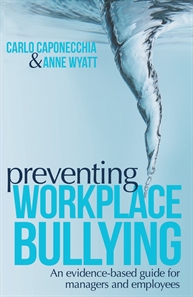Mean Business
The relative problem of bullying
5 Comments
I was reminded a couple of weeks ago while talking to a group of business leaders of an idea I have often used in my teaching, about the exposure of different workers to different hazards. Bullying is now firmly seen as a health and safety issue in Australia – numerous reports, inquiries and articles support that, as does the guidance material that now exists across all Australian states and territories. I imagine this will also be supported by the new National Code of Practice on workplace bullying, which should be available for public comment soon (watch this space!).
With many workplace hazards, we can develop a “profile” of the kinds of workers who may be most exposed tho them. For example, the hazards that are particular to firefighters (eg. exposure to carcinogens at fires) have been highlighted recently, at a senate inquiry (see an article on this here).
When we think about bullying and psychological hazards in general, all workers have the potential to be exposed to these hazards, simply because they are humans in workplaces. Psychological hazards do not depend on the task you do, the equipment you use, or the physical environmental factors (like the fire and carcinogens for fire fighters) that surround your job. This is why it’s important for all workplaces to have good preventative systems.
But the relative exposure may well be different in different jobs. Contrasting blue collar and white collar workers is a somewhat crude distinction, but let’s use it for the sake of argument. Both blue and white collar workers can be exposed to psychological hazards. Let’s imagine the total sum of hazards to which blue and white collar workers can potentially be exposed to as a two pies. White collar workers are not exposed to that many different hazards, and certainly not as many highly serious ones as blue collar workers. As a proportion of their hazard profile (or pie), psychological hazards would make up a larger relative proportion of that pie, than for blue collar workers.
This doesn’t mean that white collar workers are more likely to get a psychological injury.
It doesn’t mean that blue collar workers are less likely to get a psychological injury, nor that psychological injury is any less important in those sectors.
It just means that when thinking about the total hazards to which a worker could be exposed, psych hazards make up a greater proportion of the hazards for white collar workers than for blue collar workers. The blue collar pie is made up of a range of other things like being hit by/caught in/cut by equipment, falling from heights, exposure to chemicals or other harmful materials etc; while the white collar pie has a more restricted range (manual handling and ergonomic issues being a major example).
The implication of this idea is that though all industries have the potential for psychological hazards, some industries have even greater reason to pay attention to psych hazards, because they constitute a greater share of workplace health and safety problems.

